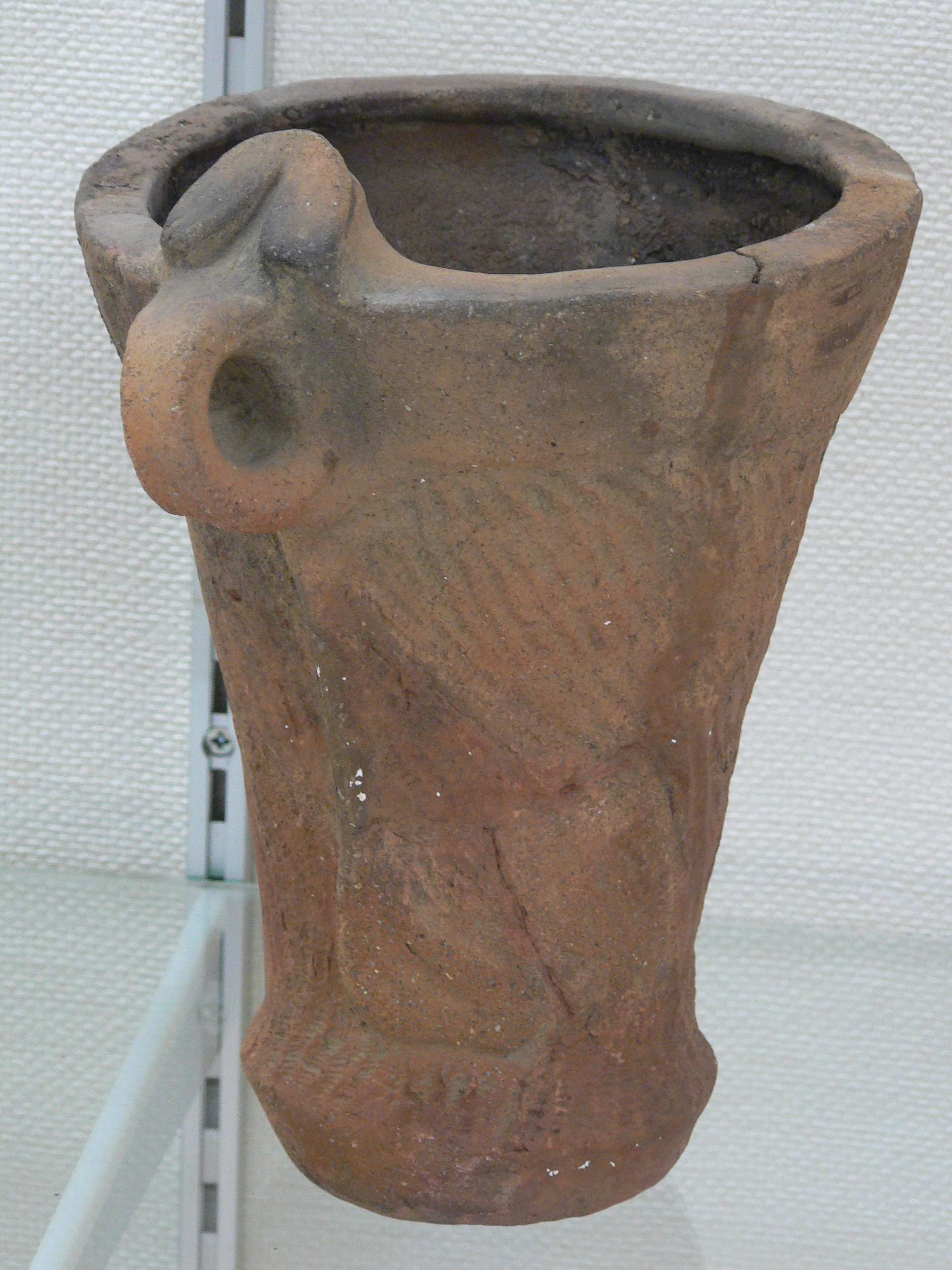Idojiri Ruins on:
[Wikipedia]
[Google]
[Amazon]
 The is an
The is an
Fujimi town official site
{{in lang, ja
History of Nagano Prefecture Fujimi, Nagano Historic Sites of Japan Archaeological type sites Jōmon period sites
archaeological site
An archaeological site is a place (or group of physical sites) in which evidence of past activity is preserved (either prehistoric or historic or contemporary), and which has been, or may be, investigated using the discipline of archaeology an ...
containing the ruins of a mid-Jōmon period
The is the time in Japanese history, traditionally dated between 6,000–300 BCE, during which Japan was inhabited by a diverse hunter-gatherer and early agriculturalist population united through a common Jōmon culture, which reached a c ...
(approximately 2500–1500 BCE) settlement located in what is now part of the town of Fujimi, Suwa District, Nagano
is a district located in Nagano Prefecture, Japan.
As of 2003, the district has an estimated population of 46,162 and a density of 181.18 persons per km2. The total area is 254.79 km2.
Towns and villages
* Hara
* Fujimi
*Shimosuwa
is a ...
in the Chūbu region
The , Central region, or is a region in the middle of Honshu, Honshū, Japan, Japan's main island. In a wide, classical definition, it encompasses nine prefectures (''ken''): Aichi Prefecture, Aichi, Fukui Prefecture, Fukui, Gifu Prefecture ...
of Japan
Japan ( ja, 日本, or , and formally , ''Nihonkoku'') is an island country in East Asia. It is situated in the northwest Pacific Ocean, and is bordered on the west by the Sea of Japan, while extending from the Sea of Okhotsk in the north ...
. The site was designated a National Historic Site of Japan in 1967.
Overview
The Idojiri site is located at the southeastern foot ofMount Yatsugatake
, also known as just Yatsugatake is a volcanic group of inactive volcanoes located on the border of Nagano Prefecture and Yamanashi Prefecture on Honshū in Japan.
Description
The Southern Yatsugatake Volcanic Group is part of the Yatsugatake M ...
at an elevation of 800 to 1000 meters, with abundant spring water, which drains on a gentle slope towards the Fuji River. The around surrounding Mount Yatsugatake has a very high concentration of settlement traces from the Jōmon period, including the Akyū ruins just to the north of this site. Over 50 middle Jōmon period ruins in the immediate area surrounding the Idojiri site because of abundant spring water.
The Idojiri site was excavated numerous times from 1949 onwards. It was found to contain the foundations for over 200 pit dwellings along with an enormous amount Jōmon pottery
The is a type of ancient earthenware pottery which was made during the Jōmon period in Japan. The term "Jōmon" () means "rope-patterned" in Japanese, describing the patterns that are pressed into the clay.
Outline
Oldest pottery in Jap ...
shards which have been used in establishing an earthenware chronology of the period, including twelve complete pottery containers with a distinctive design of abstract patterns, people, and the heads of animals. Nine of these pots were large, deep containers suitable for use as storage containers. The others appear to have been used for boiling food. Artifacts uncovered at the site include a large number of stone tool
A stone tool is, in the most general sense, any tool made either partially or entirely out of stone. Although stone tool-dependent societies and cultures still exist today, most stone tools are associated with prehistoric (particularly Stone Ag ...
s, including ten concave stones, 54 stone axe
A hand axe (or handaxe or Acheulean hand axe) is a prehistoric stone tool with two faces that is the longest-used tool in human history, yet there is no academic consensus on what they were used for. It is made from stone, usually flint or che ...
s and stone dishes, which are believed to have been used for cooking and for processing of nuts and acorns. The site also contained carbonized remains from the hearths, which appear to be the remnants of burned bread.
Some of the artifacts discovered are displayed at the at site. One of the pots discovered at this site was the subject of a 1972 postage stamp
A postage stamp is a small piece of paper issued by a post office, postal administration, or other authorized vendors to customers who pay postage (the cost involved in moving, insuring, or registering mail), who then affix the stamp to the fa ...
issued by the Japanese government. The site is open to the public as an archaeological park
An archaeological site is a place (or group of physical sites) in which evidence of past activity is preserved (either prehistoric or historic or contemporary), and which has been, or may be, investigated using the discipline of archaeology and ...
, with some faux restored pit dwellings. It is approximately 15 minutes on foot from Shinano-Sakai Station.
See also
*List of Historic Sites of Japan (Nagano)
This list is of the Historic Sites of Japan located within the Prefecture of Nagano.
National Historic Sites
As of 1 August 2020, thirty-eight Sites have been designated as being of national significance (including one * Special Historic Site) ...
References
External links
Fujimi town official site
{{in lang, ja
History of Nagano Prefecture Fujimi, Nagano Historic Sites of Japan Archaeological type sites Jōmon period sites